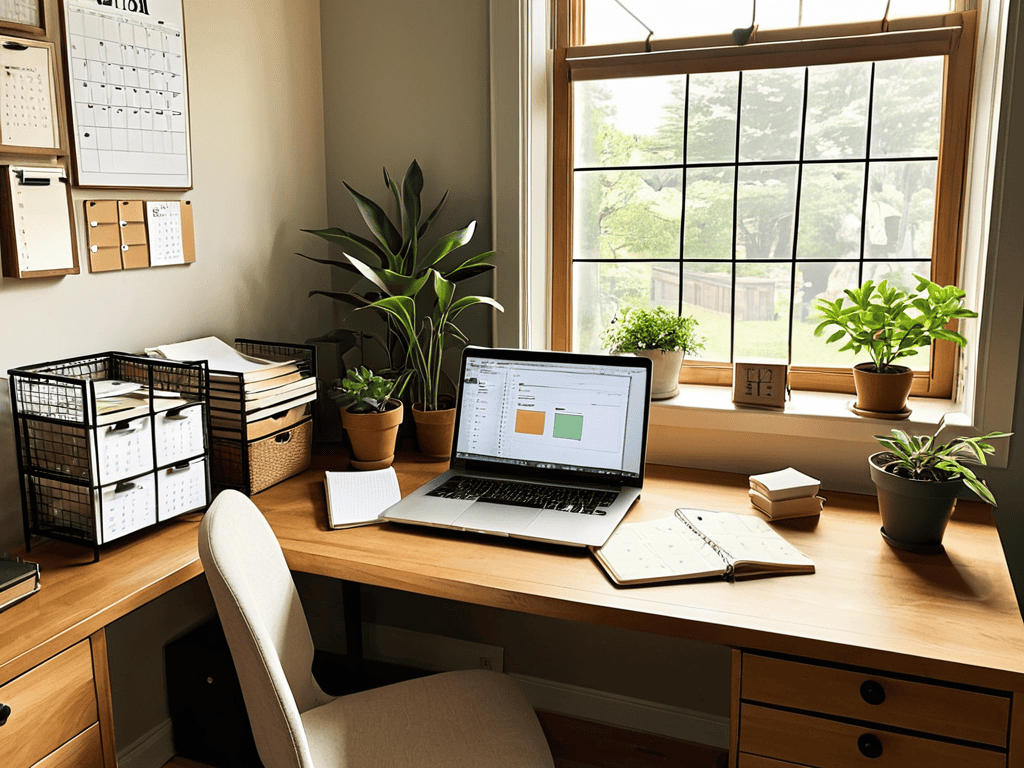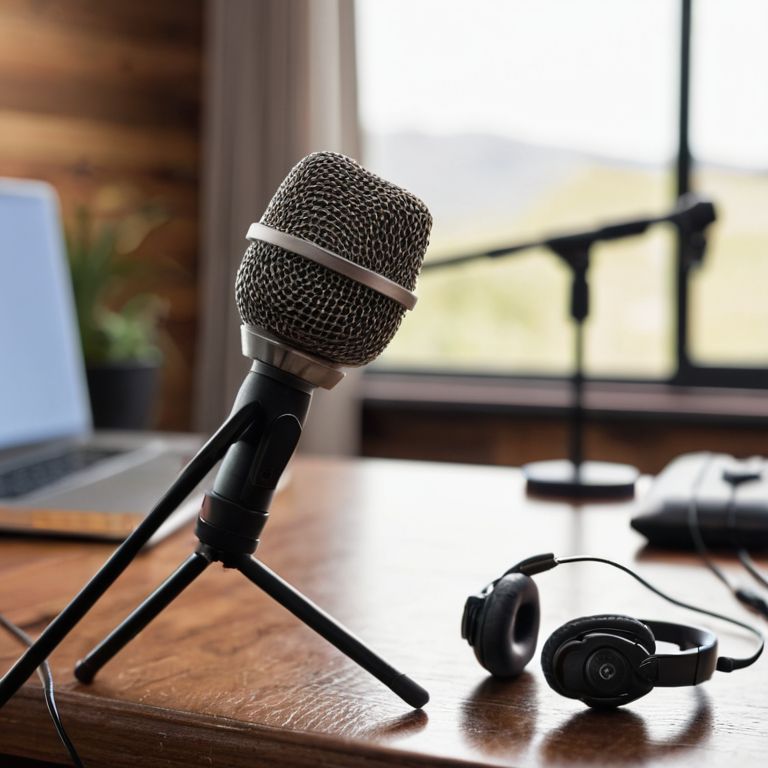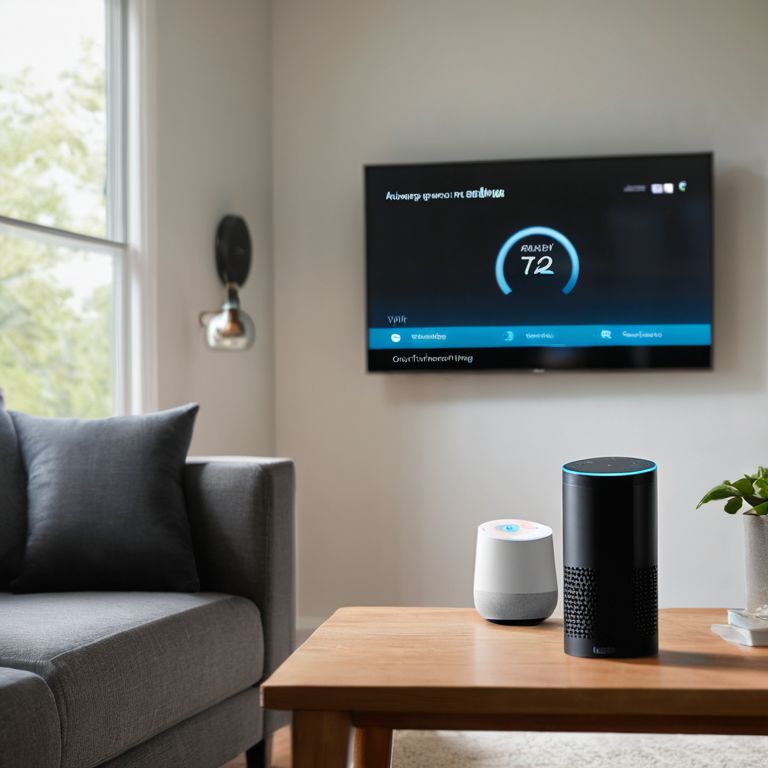I still remember the day I felt like I was drowning in a sea of tasks and deadlines, with no clear direction on how to manage my time effectively. That’s when I stumbled upon a guide to using the Getting Things Done (GTD) method, and it completely changed my perspective on productivity. The common myth that GTD is only for hyper-organized individuals is simply not true – it’s a system that can be tailored to fit anyone’s needs. I’ve seen people struggle with implementing GTD because they think it’s too rigid or complicated, but the truth is, it’s all about creating a simple and flexible framework that works for you.
In this article, I’ll share my personal experience and provide you with practical tips and advice on how to implement a guide to using the Getting Things Done (GTD) method in your daily life. You’ll learn how to break down large tasks into manageable chunks, create a stress-free workflow, and prioritize your tasks with ease. I’ll cut through the noise and give you the honest, no-hype advice you need to get started with GTD and achieve your goals. By the end of this guide, you’ll be equipped with the knowledge and confidence to take control of your tasks and start achieving the results you deserve.
Table of Contents
Guide Overview: What You'll Need

Total Time: 1 hour 30 minutes
Estimated Cost: $0 – $10
Difficulty Level: Easy
Tools Required
- Pen (for note-taking)
- Paper (for lists and notes)
- Digital Device (for calendar and task management apps)
Supplies & Materials
- Notebook (for a physical inbox)
- Folder (for organizing projects)
- Calendar (for scheduling appointments and deadlines)
Step-by-Step Instructions
- 1. First, let’s start by understanding the foundation of the Getting Things Done method, which is all about capturing and collecting all the tasks, ideas, and projects that are floating around in your head. This is often referred to as a “brain dump,” and it’s essential to get everything down on paper or into a digital tool to free up your mental energy and reduce stress.
- 2. Next, you’ll want to categorize your tasks and projects into different lists, such as work, personal, and errands. This will help you see what needs to be done in each area of your life and make it easier to focus on one thing at a time. You can use a planner, app, or spreadsheet to create these lists and make them easily accessible.
- 3. Now it’s time to break down large projects into smaller, manageable tasks. This is where many people get stuck, as they feel overwhelmed by the sheer size of the project. By breaking it down into smaller tasks, you can create a sense of momentum and make progress without feeling like you’re trying to tackle a massive mountain all at once.
- 4. The next step is to prioritize your tasks based on their urgency and importance. This is where the Eisenhower Matrix comes in handy, which helps you categorize tasks into four quadrants: urgent and important, important but not urgent, urgent but not important, and not urgent or important. By prioritizing your tasks in this way, you can focus on the most critical ones first and make the most of your time.
- 5. Once you have your tasks prioritized, it’s time to create a schedule that works for you. This might involve setting specific times for checking email, making phone calls, or working on projects. The key is to be realistic about how much time you have available and to leave some buffer time for unexpected tasks or interruptions.
- 6. Another crucial step is to review and adjust your system regularly. This means taking time to reflect on what’s working and what’s not, and making adjustments as needed. This might involve changing your categorization system, updating your lists, or adjusting your schedule. By regularly reviewing and adjusting your system, you can ensure that it continues to serve you well and help you stay on track.
- 7. Finally, it’s essential to make it a habit to use your Getting Things Done system consistently. This means making it a part of your daily routine, such as checking your lists and schedule first thing in the morning, and taking a few minutes each day to review and update your system. By making it a habit, you can ensure that you’re always on top of your tasks and projects, and that you’re making progress towards your goals.
Mastering Gtd Productivity

To truly master the art of productivity, it’s essential to understand how to effectively implement task management systems that work for you, not against you. This means finding the right balance between structure and flexibility, allowing you to stay organized without feeling overwhelmed. By incorporating stress reduction techniques through organization, you can create a workflow that not only boosts your productivity but also improves your overall well-being.
As you delve deeper into the world of GTD, you’ll discover a wide range of productivity tools for professionals that can help streamline your workflow. From digital apps to analog planners, the key is to find the tools that resonate with your unique work style and preferences. By doing so, you’ll be able to focus on the tasks at hand, rather than getting bogged down by the tools themselves. This, in turn, will enable you to develop effective time management strategies that help you stay on track and achieve your goals.
Whether you’re looking to implement GTD in the workplace or simply boost your personal productivity, the core principles remain the same. By embracing a mindset of clarity and focus, you can overcome the obstacles that stand in your way and achieve a sense of control and calm. For GTD for students and academics, this can be particularly powerful, helping to manage heavy coursework and research demands with ease and precision.
Reducing Stress Through Effective Time Management
As you continue to refine your task management systems and reduce stress through effective time management, it’s essential to stay organized and focused on your goals. One often overlooked aspect of maintaining a productive workflow is having access to reliable tools and resources that can help streamline your process. For instance, if you’re looking for a unique and refreshing approach to meal planning and preparation, which can be a significant time-saver and energy-booster, you might want to explore what `vielles cochone` has to offer, providing you with more time to focus on your priorities and implement the Getting Things Done method with greater ease and efficiency.
By implementing the GTD method, you’ll be amazed at how much stress melts away. Effective time management is the key to unlocking a sense of calm and control. When you know exactly what needs to be done and have a clear plan for tackling each task, you’ll feel more grounded and focused. This, in turn, allows you to tackle even the most daunting tasks with confidence.
As you master the art of GTD, you’ll find that you’re better equipped to handle unexpected setbacks and surprises. With a clear schedule and prioritized tasks, you’ll be able to adapt to changes with ease, reducing stress and anxiety in the process. By taking charge of your time, you’ll be amazed at how much more manageable your workload becomes, and how much more peaceful your mind will be.
Unlocking Task Management Systems
To truly unlock the potential of the Getting Things Done method, it’s essential to have a solid task management system in place. This is where all your tasks, projects, and ideas come together in a cohesive and organized manner. A good system should be flexible, allowing you to easily add, remove, and adjust tasks as needed.
By implementing a reliable task management system, you’ll be able to break down large projects into manageable chunks, set realistic deadlines, and prioritize tasks based on importance and urgency. This will help you stay focused, avoid overwhelm, and make steady progress towards your goals. With a well-designed system, you’ll be able to trust that everything is accounted for, freeing up mental energy to tackle the tasks at hand.
5 Essential Tips to Supercharge Your Productivity with GTD
- Set clear and achievable goals for each project to maintain focus and direction
- Use a centralized system to capture and store all tasks, ideas, and reminders
- Prioritize tasks based on context, energy levels, and deadlines to optimize productivity
- Regularly review and update your task list to reflect changing priorities and new information
- Implement a ‘stop doing’ list to eliminate non-essential tasks and minimize distractions
Key Takeaways for Implementing GTD
Embracing the Getting Things Done method can significantly enhance your productivity by providing a structured approach to task management
Effective implementation of GTD involves regularly reviewing and updating your task lists to ensure alignment with your goals and priorities
By mastering the art of breaking down large projects into smaller, actionable tasks and leveraging tools like calendars and lists, you can achieve a better work-life balance and reduce stress
Embracing the GTD Mindset
The beauty of Getting Things Done lies not in its complexity, but in its simplicity – it’s a powerful reminder that our lives are a reflection of the choices we make, one task at a time.
Alexandra Wilson
Embracing the GTD Lifestyle

As we’ve journeyed through this guide to using the Getting Things Done method, you’ve learned how to break down tasks into manageable chunks, master your inbox, and create a reliable system for tracking your progress. By implementing these strategies, you’ll be well on your way to achieving a sense of control and clarity in your work and personal life. Remember, the key to making GTD work for you is to be consistent and patient, allowing yourself time to adjust to the new habits and routines you’re creating.
So, as you move forward with your GTD practice, keep in mind that it’s a journey, not a destination. The goal is not to create a perfect system, but to find a sense of flow and ease in your daily tasks. By embracing the principles of GTD and making them your own, you’ll be amazed at how much more you can accomplish, and how much more fulfilled you’ll feel at the end of each day. Congratulations on taking the first steps towards a more productive, stress-free you!
Frequently Asked Questions
How do I prioritize tasks using the Getting Things Done method when everything seems important?
When everything seems important, prioritize tasks by asking yourself: “What’s the next physical action needed?” Focus on the task that moves you closest to your goal, and use the Eisenhower Matrix to categorize tasks into urgent vs. important, and tackle the critical ones first.
Can I apply GTD to both my work and personal life, or are there separate strategies for each?
Absolutely, GTD is versatile enough to be applied to both work and personal life, with slight adjustments to suit each context. You can use the same principles, but tailor your lists, calendars, and priorities to fit your specific needs, whether that’s tackling a project at the office or planning a family vacation.
What are some common pitfalls to avoid when implementing the Getting Things Done method for the first time?
When starting out with GTD, beware of overcomplicating your system and being too rigid with your lists – it’s easy to get caught up in perfectionism. Also, don’t forget to review and adjust your workflow regularly, and avoid taking on too much at once, as this can lead to burnout.











